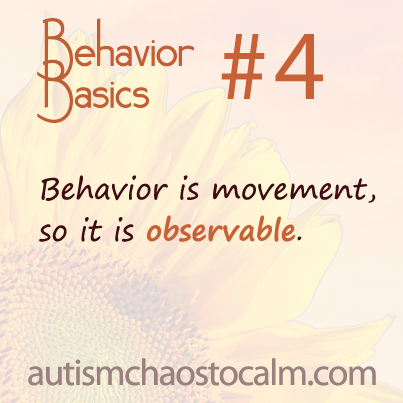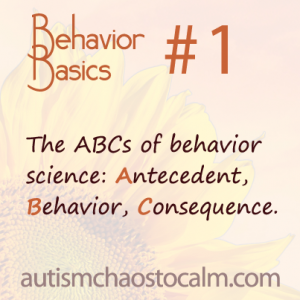 Behavior Basic #3:
Behavior Basic #3:
When we behave, we move parts of our body.
To do even the most mundane chores, we move several parts of the body, move those parts in specific ways and often in a specific sequence. Think of making coffee in the morning: Walk to the cupboard and grasp coffee can, grasp coffee pot, walk to sink to fill with water, pour water into coffee maker, scoop coffee into filter basket, push basket back into place, press ON button. The everyday behavior of making coffee requires the physical movements of walking, grasping, lifting, turning knobs, pouring, scooping, pushing and pressing.
4. Behavior is movement, so it is observable.
Behavior is movement of the body, so it is something that you can see or hear. If you can see or hear it, you can observe when and where that behavior happens. For example, if a child engages in the behavior (physical movement) of shrieking, you can observe to see if it happens in certain rooms of the house, outside in the yard or playground, or in the car. You can observe to see if it happens more often in the morning, afternoon or evening, on weekdays or weekends. This observation provides information that can be used to develop a behavior plan to address shrieking.









